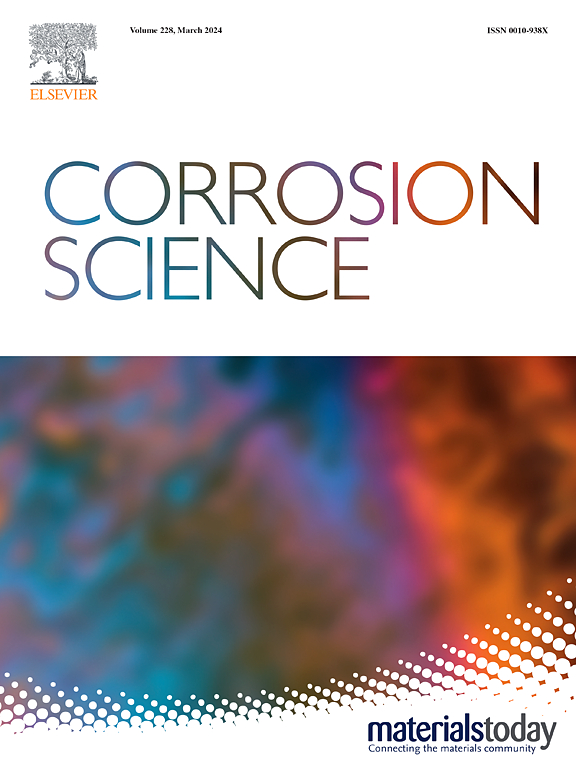热处理诱导Mg(OH) 2的生长取向偏差,提高Mg- sc合金的耐蚀性
IF 7.4
1区 材料科学
Q1 MATERIALS SCIENCE, MULTIDISCIPLINARY
引用次数: 0
摘要
本文提出了一种新的显微组织驱动策略,通过热处理调节Mg(OH)2腐蚀产物的生长取向偏差来提高Mg- sc合金的耐腐蚀性。这种方法促进了致密和致密腐蚀膜的形成,从根本上提高了屏障性能。结果表明,时效可以使Mg(OH)2从随机堆叠转变为高度有序的交错层状结构,显著提高了耐蚀性。应力解除状态下,合金表现出部分有序的形态,具有中间的保护作用,而固溶处理的合金则出现严重的晶粒粗化,形成多孔的、无序的腐蚀膜。晶粒细化、织构弱化、纳米级析出物钉住和表面能各向异性降低共同作用控制了生长取向偏差。这些因素共同促进了腐蚀产物的横向堆积,增强了膜的致密性和耐腐蚀性。该研究为控制腐蚀产物生长方向提供了微观组织驱动策略,为开发高耐蚀镁合金提供了新的途径。本文章由计算机程序翻译,如有差异,请以英文原文为准。
Induced growth orientation deviation of Mg(OH)₂ by heat treatment to enhance corrosion resistance of Mg-Sc alloy
This work presents a novel microstructure-driven strategy to enhance the corrosion resistance of Mg-Sc alloys by regulating the growth orientation deviation of Mg(OH)2 corrosion products through heat treatment. This approach promotes the formation of dense and compact corrosion films, fundamentally improving the barrier performance. Results reveal that aging induces a transition from randomly stacked Mg(OH)2 to a highly ordered, interleaved lamellar structure, significantly improving corrosion resistance. The stress-relieved condition exhibits a partially ordered morphology with intermediate protection, while solution-treated alloys suffer from severe grain coarsening and develop porous, disordered corrosion films. The growth orientation deviation is governed by the combined effects of grain refinement, texture weakening, nanoscale precipitate pinning, and reduced surface energy anisotropy. These factors collectively promote lateral stacking of corrosion products, enhancing film compactness and corrosion resistance. This study provides a microstructure-driven strategy to control corrosion product growth orientation, offering a new pathway for developing highly corrosion-resistant Mg alloys.
求助全文
通过发布文献求助,成功后即可免费获取论文全文。
去求助
来源期刊

Corrosion Science
工程技术-材料科学:综合
CiteScore
13.60
自引率
18.10%
发文量
763
审稿时长
46 days
期刊介绍:
Corrosion occurrence and its practical control encompass a vast array of scientific knowledge. Corrosion Science endeavors to serve as the conduit for the exchange of ideas, developments, and research across all facets of this field, encompassing both metallic and non-metallic corrosion. The scope of this international journal is broad and inclusive. Published papers span from highly theoretical inquiries to essentially practical applications, covering diverse areas such as high-temperature oxidation, passivity, anodic oxidation, biochemical corrosion, stress corrosion cracking, and corrosion control mechanisms and methodologies.
This journal publishes original papers and critical reviews across the spectrum of pure and applied corrosion, material degradation, and surface science and engineering. It serves as a crucial link connecting metallurgists, materials scientists, and researchers investigating corrosion and degradation phenomena. Join us in advancing knowledge and understanding in the vital field of corrosion science.
 求助内容:
求助内容: 应助结果提醒方式:
应助结果提醒方式:


